Recent Posts
Spring Clean to Stay Dry: Preventing Flooding in Your Home | SERVPRO of San Diego East
4/7/2025 (Permalink)
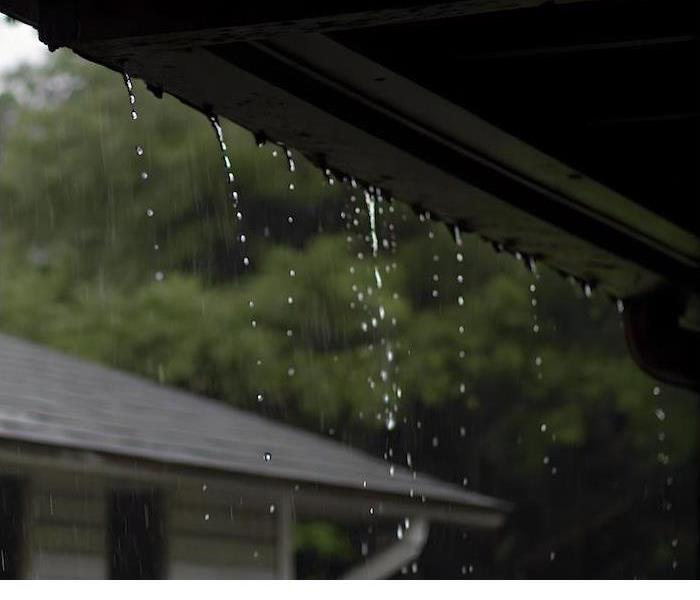 Spring is the time to get ahead of potential flooding risks
Spring is the time to get ahead of potential flooding risks
Spring is here in San Diego, and while the sunny skies are a welcome sight, the rainy weather can bring some unexpected challenges for homeowners. As the season shifts, it’s the perfect time to not only clean out your closets and windows but also make sure your home is safe from potential flooding. SERVPRO® of San Diego East is here to help you prevent flooding caused by common issues like appliance malfunctions, plumbing failures, and leaks—problems that can be even more likely during the spring months.
Understanding the Risks of Spring Flooding in San DiegoSan Diego may not get as much rain as other areas, but the spring showers that roll through can still cause problems for your home, especially when it comes to flooding. Broken pipes, appliance failures, and weather-related leaks are all common issues that can lead to water damage, and the wet season often increases the risk of these events.
Leaks around windows and doors are also more likely when heavy rains hit. Even small leaks can lead to bigger issues, such as mold growth or structural damage if left unchecked. If your home is older or has not been well-maintained, these problems can be even more pronounced, making early detection and action crucial.
How to Prevent Flooding in Your Home This SpringSpring cleaning isn't just about dusting shelves and organizing your garage. It's also about getting ahead of potential flooding risks by ensuring your plumbing, appliances, and home systems are functioning correctly.
Check Appliances and Plumbing: One of the most common causes of internal flooding is malfunctioning appliances like dishwashers, washing machines, and water heaters. Inspect hoses and connections for any signs of wear and tear, and consider replacing old or cracked hoses before they fail.
Clean Gutters and Downspouts: Ensure your gutters are clear of debris, allowing water to flow freely away from your home. Blocked gutters can overflow, potentially leading to water seepage into your basement or foundation.
Inspect the Roof and Foundation: Ensure your roof and foundation are intact. Small cracks or missing shingles may allow water to seep in, leading to flooding in areas like basements or lower levels of your home.
If you notice any issues or aren’t sure where to start, it's a good idea to reach out to professionals like SERVPRO of San Diego East. They can help assess your home’s vulnerability and offer expert advice on preventing flooding before it starts.
Call SERVPRO of San Diego East TodaySpring is the time to get ahead of potential flooding risks. Don't wait for a plumbing issue or leak to cause water damage in your home. Reach out to SERVPRO of San Diego East today to ensure your home is safe and dry all season long. Visit our website for more information
Year-Round Ways to Prevent Mold | SERVPRO of San Diego East
3/24/2025 (Permalink)
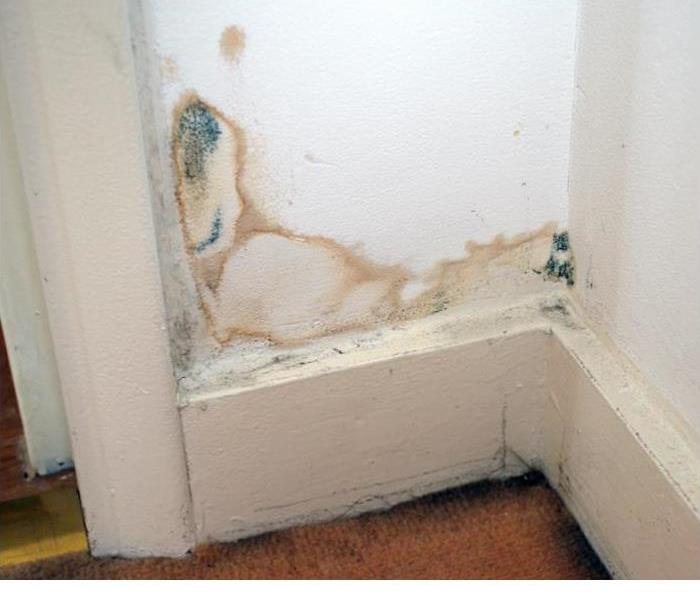 For more information, visit our website at SERVPRO of San Diego East.
For more information, visit our website at SERVPRO of San Diego East.
Mold can sneak up on you when you least expect it, and in a city like San Diego, which enjoys mild winters and warm summers, it’s important to stay vigilant. While mold growth is often associated with wet, humid conditions, it can appear at any time of year, especially if the right conditions are present. SERVPRO® of San Diego East is here to share a few helpful tips for homeowners to keep mold at bay, regardless of the season.
Know Your Seasons and How They Affect Mold GrowthSan Diego is known for its mild climate, but that doesn’t mean mold won’t thrive here. While most people think of mold as a problem during rainy weather, it can also grow in the warmer months. During the summer, San Diego’s humidity levels can rise, and without proper ventilation, areas of your home can become breeding grounds for mold spores.
Winter also brings its own set of challenges. Though temperatures rarely dip below freezing, winter rains are a common occurrence in San Diego. When you combine rain with cooler temperatures, condensation can form on windows, walls, and pipes, creating the perfect environment for mold growth. Being proactive during these transitional periods can make all the difference.
Keep Your Home Dry: The Best Defense Against MoldThe best way to prevent mold growth is to keep moisture levels in your home under control. Here are some essential tips:
- Ventilate: Make sure areas prone to moisture, like bathrooms, kitchens, and laundry rooms, are well-ventilated. Use exhaust fans to help reduce humidity.
- Repair Leaks: A small leak can lead to big problems. Inspect pipes, roofs, and windows for any signs of leaks, and repair them as soon as possible.
- Dehumidify: In warmer months, using a dehumidifier can help maintain optimal humidity levels, keeping mold at bay.
- Monitor Condensation: In cooler months, pay extra attention to condensation on windows and walls. Wipe up excess water and consider using moisture-absorbing products to prevent mold growth.
SERVPRO of San Diego East recommends inspecting high-risk areas of your home regularly, especially after storms or periods of high humidity.
Don’t Wait—Act Fast!Mold can spread quickly if left unchecked, leading to costly repairs and potential health risks. If you notice any signs of mold in your home, don’t wait to address the issue. SERVPRO of San Diego East is ready to assist with mold inspections and remediation services. Contact us today to learn more about how we can help protect your home from mold growth year-round.
For more information, visit our website at SERVPRO of San Diego East.
Spring Cleaning for Businesses | SERVPRO of San Diego East
3/24/2025 (Permalink)
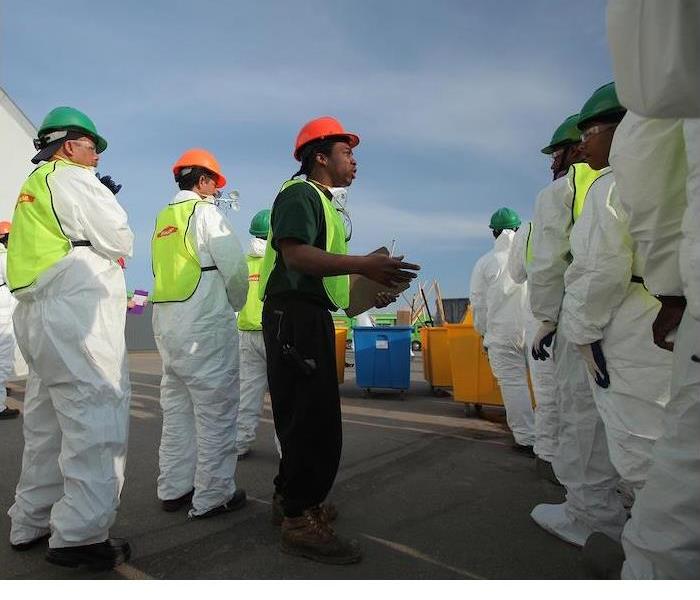 Call us today or visit SERVPRO of San Diego East to learn more and get a free estimate. Let’s make your business ready for spring!
Call us today or visit SERVPRO of San Diego East to learn more and get a free estimate. Let’s make your business ready for spring!
Freshen Up Your Business This Spring with SERVPRO® of San Diego EastSpring has arrived in San Diego! As the weather warms up and the days get longer, businesses in the area are ready to shake off the winter blues and prepare for a busy season ahead. With the spring season comes a wave of fresh opportunities and the perfect chance to deep-clean your space. But for busy business owners, spring cleaning can feel like a daunting task. Luckily, SERVPRO of San Diego East is here to help!
The Benefits of Spring Cleaning for Your BusinessIn San Diego, spring means more than just blooming flowers. The weather is mild, which encourages people to spend more time outdoors. This leads to increased foot traffic, more events, and a generally higher volume of activity in local businesses. Whether you own a storefront, office, or commercial space, a clean and fresh environment is crucial for creating a welcoming atmosphere for your customers.
A clean business also has a direct impact on your reputation. Clients and customers are more likely to trust a company that maintains a tidy, professional environment. Plus, deep cleaning in the spring helps improve air quality, remove allergens, and prevent dust buildup, ensuring a healthier space for both your team and customers.
Why SERVPRO of San Diego East is the Right Choice for Your Spring Cleaning NeedsWith spring often bringing windy days and occasional rain, your business is likely to face more dirt and debris than usual. Whether it’s dust, pollen, or moisture from a sudden rainstorm, San Diego’s spring weather can create the perfect conditions for contaminants to build up in your space. SERVPRO of San Diego East understands the challenges that come with this and is equipped to tackle them head-on.
SERVPRO’s team of professionals is experienced in handling all types of cleaning, from carpet and upholstery cleaning to deep sanitizing and disinfecting. We use state-of-the-art equipment and eco-friendly cleaning products, ensuring your business not only looks spotless but is also safe for everyone who enters.
As businesses get ready for the influx of spring shoppers, it’s the perfect time to schedule a comprehensive cleaning that can help you maintain a high standard of cleanliness, which is essential for keeping your clients and staff happy and healthy.
Ready to Give Your Business a Fresh Start?Don’t let your spring cleaning become a stressful chore—let the experts at SERVPRO of San Diego East handle it for you. From top-to-bottom cleaning to springtime maintenance, we’ve got the tools and expertise to make your business shine.
Call us today or visit SERVPRO of San Diego East to learn more and get a free estimate. Let’s make your business ready for spring!
Common Sources of Water Damage and How to Prevent It | SERVPRO® of San Diego East
2/21/2025 (Permalink)
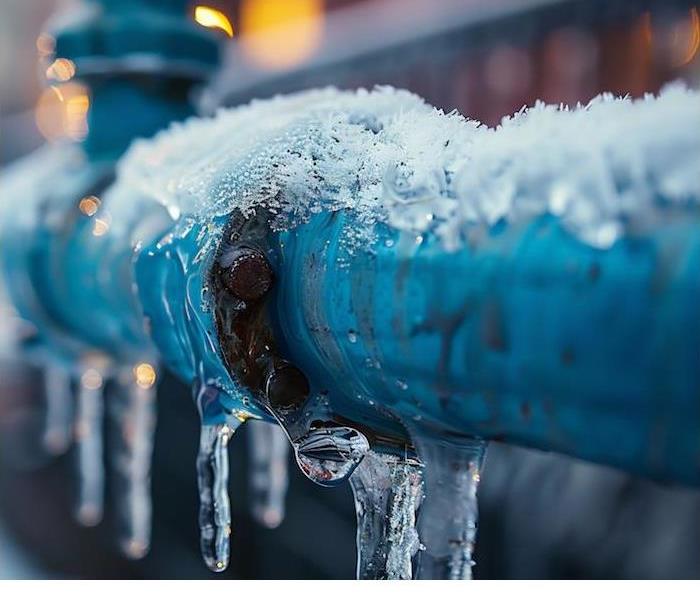 Protect your home this winter.
Protect your home this winter.
Water damage can be a homeowner's worst nightmare, and the winter months bring additional risks. Whether it's due to frozen pipes or heavy rain, it's essential to take proactive steps to prevent leaks and water-related disasters. SERVPRO® of San Diego East is here to help you identify common sources of water damage and share simple prevention tips to protect your home during the chilly season.
1. Frozen Pipes: A Winter Threat You Can't Ignore
During the colder months, frozen pipes become a significant concern for homeowners in San Diego and beyond. While the region doesn't experience extreme winter temperatures, unexpected cold snaps can still cause pipes to freeze, burst, and result in water damage. This issue is most common in uninsulated areas like attics, basements, and garages, where temperatures dip lower.
Prevention Tips for Frozen Pipes:
Insulate exposed pipes: Use foam pipe insulation to protect pipes in colder areas of your home.
Keep the heat on: Even when you're away, make sure the thermostat is set to at least 55°F.
Let faucets drip: Running water is less likely to freeze. Let a faucet drip during especially cold nights.
2. Leaking Appliances: An Ongoing Risk
Appliances such as dishwashers, washing machines, and refrigerators with water lines are common culprits of indoor water damage. Over time, hoses can wear out, or connections can loosen, leading to leaks that may go unnoticed until it's too late.
Prevention Tips for Leaking Appliances:
Inspect hoses regularly: Check for cracks or wear and replace any old or damaged hoses.
Tighten connections: Make sure all connections are secure, and check for leaks frequently.
Use appliance trays: Place trays under appliances to catch small leaks before they turn into major issues.
3. Heavy Rain and Roof Leaks: San Diego's Winter Challenge
Though San Diego's winters aren't known for heavy snowfall, the region can experience intense rainfall during the season. Roof leaks can develop, especially if your roof is older or has existing damage. A roof leak may not be obvious right away, but it can quickly lead to water damage inside your walls or ceilings.
Prevention Tips for Roof Leaks:
Inspect your roof: Look for missing shingles, cracked tiles, or any damage that could allow water to penetrate.
Clean gutters: Clogged gutters can lead to water backup, which increases the risk of roof leaks.
Seal cracks and gaps: Check for gaps around vents, skylights, and chimneys where water could seep in.
SERVPRO® of San Diego East: Your Go-To for Water Damage Prevention and Repair
While taking preventive measures is important, it's also vital to know who to call if a leak or burst pipe causes water damage. SERVPRO® of San Diego East specializes in water damage restoration and can help you get back on track quickly. Whether it's frozen pipes, appliance leaks, or a roof disaster, we've got you covered.
Protect your home this winter. If you're concerned about water damage risks or need help with water damage repair, contact SERVPRO® of San Diego East today. Our team is ready to help you stay safe and dry!
Prevent Plumbing Disasters: Protect Your Business from Water Damage | SERVPRO® of San Diego East
2/21/2025 (Permalink)
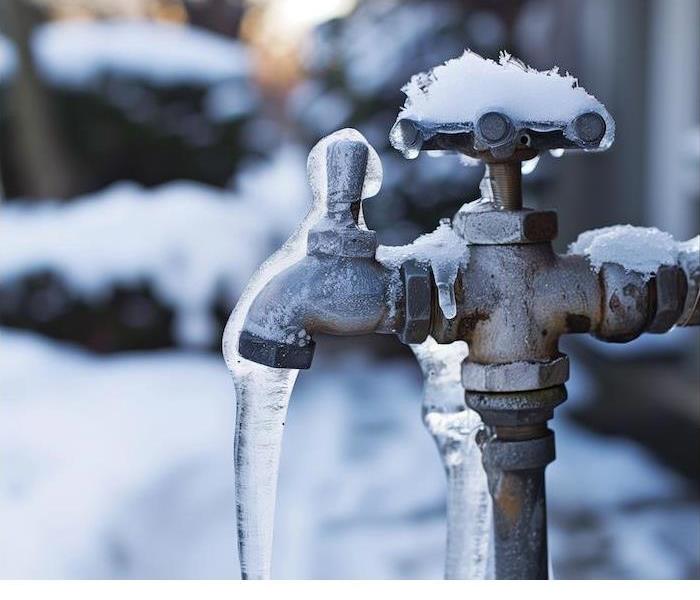 Don’t Wait – Protect Your Business Today!
Don’t Wait – Protect Your Business Today!
The Year-Round Threat of Plumbing Failures
As a business owner in San Diego, you're likely no stranger to the occasional plumbing issue, but water damage can cause more disruption than you'd think. Plumbing failures, whether from frozen pipes in winter or overflowing sinks year-round, can lead to costly repairs and downtime. It's crucial to know how to prevent these issues and how to respond quickly to minimize damage.
At SERVPRO® of San Diego East, we understand that plumbing disasters are often unpredictable. That’s why it's important to stay prepared for potential issues, regardless of the season.
How to Prevent Plumbing Failures at Your Business
Plumbing problems can be avoided with regular maintenance and proactive measures. Here are some tips for keeping your plumbing systems in top shape:
Inspect Your Pipes Regularly: Check for signs of wear and tear, leaks, or clogs in your business’s plumbing system. Scheduling routine inspections can help catch small issues before they turn into major problems.
Install Proper Insulation: While San Diego doesn't experience freezing temperatures as often as other parts of the country, the occasional cold snap can still lead to frozen pipes. Be sure to insulate any exposed pipes, especially those in unheated areas, to prevent them from freezing.
Monitor Water Pressure: High water pressure can cause pipes to rupture. Keep an eye on water pressure and install a pressure regulator if necessary.
Be Mindful of Drains: Prevent clogs by not flushing inappropriate items down the toilet and using drain screens to catch debris in sinks.
By taking these preventive measures, you can avoid most plumbing disasters and ensure your business runs smoothly without interruptions from water damage.
What to Do When Plumbing Failures Occur
Even with the best precautions, plumbing failures can still happen. When they do, you need a professional team to handle the cleanup and restoration. SERVPRO® of San Diego East specializes in water damage restoration and can help you respond quickly to limit the damage. Whether it’s a small leak, an overflowing sink, or a larger plumbing disaster, our team is ready to assist you 24/7.
Act quickly by turning off the water supply, contacting a professional plumber, and calling SERVPRO® of San Diego East for water damage cleanup. The faster you act, the less costly and disruptive the damage will be.
Don’t Wait – Protect Your Business Today!
Preventing plumbing failures and responding to them promptly can save your business from costly water damage. At SERVPRO® of San Diego East, we’re here to help with water damage restoration, no matter the time of year. Ready to take action? Visit SERVPRO® of San Diego East today!
Fire Prevention Tips for Your Business | SERVPRO of San Diego East
2/21/2025 (Permalink)
 Don’t wait for a fire to strike.
Don’t wait for a fire to strike.
As a business owner in San Diego, fire prevention should always be a top priority. With the potential to cause significant damage to both property and lives, understanding how to protect your business from fire hazards is crucial. SERVPRO® of San Diego East is here to help you safeguard your business and ensure it remains protected year-round.
Why Fire Prevention Matters in San Diego
San Diego has seen its fair share of commercial fires over the last decade. According to recent statistics, businesses in California have faced an average of 50,000 commercial fires annually, with significant spikes in certain areas. For instance, San Diego County ranks among the top regions with a high incidence of commercial fires, making fire prevention efforts even more critical. By implementing proactive fire safety measures, you not only reduce risks but also improve the safety of your employees, customers, and the surrounding community.
Essential Fire Prevention Strategies for Businesses
Install and Maintain Smoke Detectors and Sprinklers
Ensure your business is equipped with reliable smoke detectors and sprinklers that are regularly inspected and maintained. These systems are your first line of defense against fire, and having them in place can drastically reduce the damage caused by a fire.
Create an Emergency Plan
An emergency plan is vital for ensuring your staff knows exactly what to do in case of a fire. Make sure everyone is familiar with escape routes, fire exits, and emergency contact information. Regularly conduct fire drills to keep everyone prepared.
Regularly Inspect Electrical Equipment
Faulty wiring or electrical systems are among the leading causes of commercial fires. Hire a professional to regularly inspect your electrical equipment and ensure it is up to code. Always address any frayed wires, exposed cables, or other signs of wear immediately.
Store Flammable Materials Safely
If your business works with or stores flammable materials, it's crucial to store them in a secure, well-ventilated area away from any potential heat sources. This simple step can prevent a fire from starting or spreading quickly.
Train Your Employees
Educating your employees on fire safety and prevention is essential. They should know how to use fire extinguishers, how to respond in case of an emergency, and how to spot potential fire hazards in the workplace.
How SERVPRO® of San Diego East Can Help
At SERVPRO® of San Diego East, we specialize in fire prevention strategies and can help you identify and eliminate fire hazards within your business. Our expert team offers comprehensive inspections and recommendations for keeping your business safe. If you ever face a fire emergency, we are here to assist with restoration and cleanup, ensuring your business gets back on track as quickly as possible.
Don’t wait for a fire to strike. Take action now to protect your business. Contact SERVPRO of San Diego East today for a fire safety consultation! Visit SERVPRO of San Diego East to learn more about our services and how we can help you prevent fire damage.
Flooding is Always Possible: How to Stay Prepared | SERVPRO of San Diego East
1/7/2025 (Permalink)
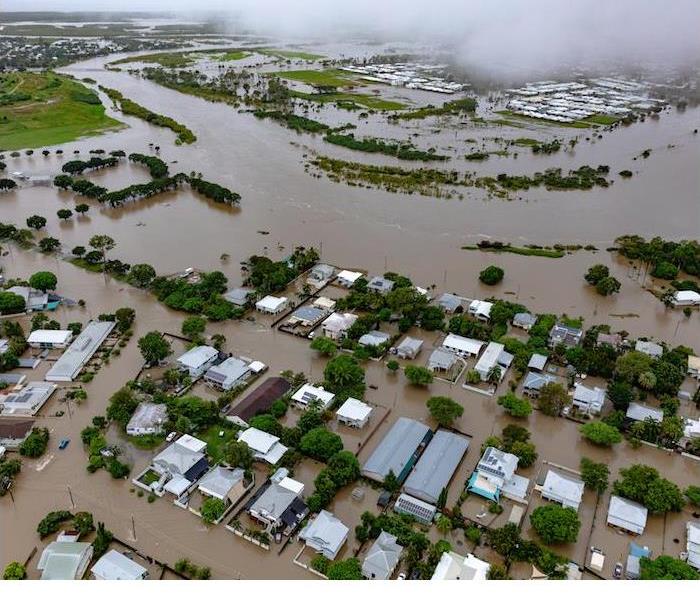 Don't delay! When storm damages affects your property, call SERVPRO of Mid-City San Diego to restore your space.
Don't delay! When storm damages affects your property, call SERVPRO of Mid-City San Diego to restore your space.
San Diego may be known for its sunny weather, but flooding is still a serious concern for homeowners. Even though we typically experience dry spells, the region is not immune to heavy rainfall, flash floods, and water damage. It’s essential to be prepared, so when flooding strikes, you know exactly what to do. At SERVPRO of San Diego East, we’ve seen firsthand how devastating floods can be and are here to offer you the tips and resources needed to protect your home.
Understanding Flood Risks
San Diego’s geography makes it vulnerable to flooding, especially during periods of intense rain and storms. The city’s past shows that when rain hits hard, flash floods can occur, causing streets to overflow and properties to flood. For instance, back in January 2016, a severe storm led to widespread flooding, damaging homes and businesses throughout the area. This wasn’t a one-time event; heavy rainfall during the winter months, particularly when El Niño patterns are present, can result in similar scenarios.
Understanding the risks is half the battle. Knowing that San Diego’s flood risks increase during certain times of the year helps homeowners plan ahead and stay prepared.
1. Create a Flood Emergency Plan
Preparation is key when it comes to protecting your property from flood damage. Start by developing a flood emergency plan for your household. This should include:
- Knowing evacuation routes: Familiarize yourself with safe routes and areas to evacuate if flooding becomes severe.
- Preparing an emergency kit: Stock up on essentials such as bottled water, non-perishable food, flashlights, and first-aid supplies.
- Communicating with family members: Make sure everyone in your household knows the plan and has a way to communicate if you become separated.
2. Safeguard Your Home
You can’t always predict when floods will occur, but you can take steps to minimize the impact. Ensure that your gutters and drains are clear to prevent water from pooling around your property. Consider using sandbags to block potential water entry points during heavy rain. It’s also wise to elevate important utilities like electrical panels and appliances to reduce the risk of water damage.
If flooding does strike, the first step is to ensure your safety. Once the danger has passed, reach out to professionals like SERVPRO of San Diego East to handle the damage safely and efficiently.
Trust SERVPRO of San Diego East for Flood Damage Restoration
Flooding is always a possibility in San Diego, and being prepared is crucial. SERVPRO of San Diego East is here to help® you restore and repair any damage if floods do occur. With our team of experts, you can rest assured that your home will be in capable hands.
Don’t wait until disaster strikes. Contact us today to learn more about how we can assist you with flood preparedness and restoration.
Visit our website for more information.
Don’t Burn Dinner—Or Your Home: November Cooking Fire Safety Tips | SERVPRO of San Diego East
1/7/2025 (Permalink)
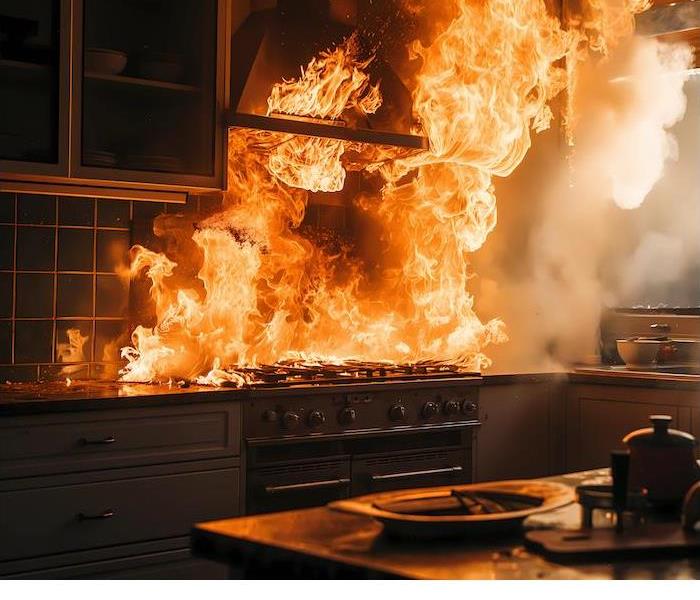 Ensure fire safety in the kitchen this November with tips from SERVPRO of San Diego East. Stay alert, prevent fires, and contact us for restoration i
Ensure fire safety in the kitchen this November with tips from SERVPRO of San Diego East. Stay alert, prevent fires, and contact us for restoration i
November brings families together, often centered around the kitchen. With all the cooking excitement, it’s essential to remember that this month also has one of the highest rates of cooking-related fires. According to the National Fire Protection Association (NFPA), Thanksgiving is the peak day for home cooking fires, with an estimated 1,630 cooking-related incidents each year. The experts at SERVPRO of San Diego East are here to help® you enjoy a safe November with simple steps to avoid cooking fires and other hazards.
#1: Know the Most Common Cooking Fire HazardsMany kitchen fires start with something as simple as leaving food unattended. Whether it’s a pot left boiling too long or an oil-splattering pan, a small oversight can lead to a big problem. Here are some of the top causes of cooking fires:
- Unattended cooking: More than half of cooking fires occur when someone leaves food on the stove and forgets about it.
- Grease fires: Oils can heat quickly and ignite before you know it. Never pour water on a grease fire, as it can make the flames spread.
- Oven and stove top clutter: Paper towels, oven mitts, or wooden utensils left too close to heat can ignite easily.
By staying alert and organized in the kitchen, you can significantly reduce the risk of a cooking fire. SERVPRO of San Diego East urges homeowners to remain vigilant, especially during busy holiday cooking sessions.
#2: Tips for Fire Safety in the KitchenMaking a few simple adjustments to your cooking habits can go a long way in preventing kitchen fires this season. Here are some kitchen fire safety tips:
- Never leave cooking unattended: Even if you need to leave the kitchen, turn off the stove or have someone keep an eye on it until you return.
- Keep a lid nearby: In case of a small pan fire, quickly cover the flames with a lid to smother it.
- Turn pot handles inward: This prevents accidental spills if someone brushes against a handle while passing by.
- Stay alert while cooking: Avoid alcohol, limit distractions, and make sure you’re fully awake when handling the stove.
- Be prepared: Have a fire extinguisher within reach and know how to use it.
#3: What to Do If a Kitchen Fire OccursAccidents can happen, and if a fire does start, don’t hesitate to call 911 for help. Attempt to extinguish small fires if you can do so safely, but prioritize your family’s safety. After the flames are out, remember that the damage might go beyond what meets the eye. Smoke residue and soot can linger, affecting air quality and surfaces in your home.
If your kitchen has suffered fire or smoke damage, reach out to the local experts. SERVPRO of San Diego East offers specialized cleaning and restoration services to get your kitchen back to pre-fire condition.
Don’t wait—protect your home this November with these fire safety tips. For more information on fire damage restoration, visit SERVPRO of San Diego East.
Stop Mold Growth During Winter to Keep Your Home Safe | SERVPRO of San Diego East
1/7/2025 (Permalink)
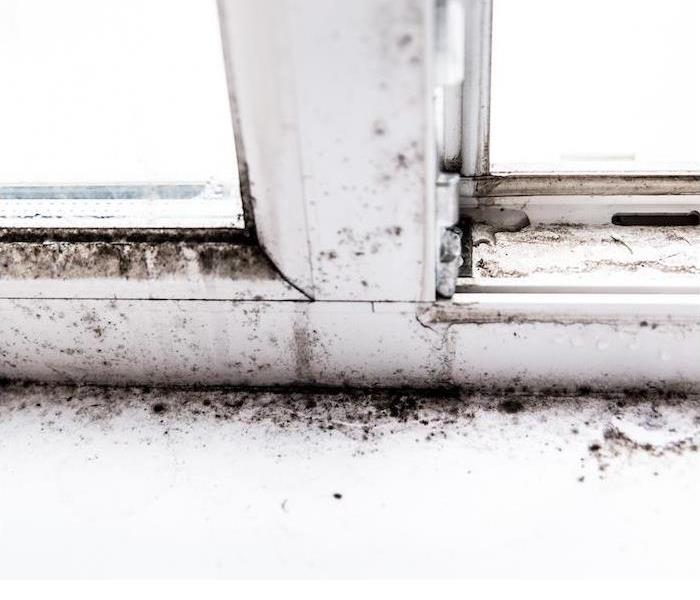 Prevent mold growth this winter by managing humidity, ventilating your home, and addressing condensation.
Prevent mold growth this winter by managing humidity, ventilating your home, and addressing condensation.
Mold is not just a summer problem; it can thrive even during the winter months, especially in places like San Diego, where the winter season brings mild but moist weather. Although San Diego doesn’t face freezing temperatures often, the average winter lows hover around the mid-40s to mid-50s. These conditions, combined with rainy spells, create a perfect environment for mold to grow. So, how can you protect your home from mold during these cooler months?
Why Mold Growth Increases in WinterMold loves damp, humid environments, and while San Diego winters are relatively mild compared to other parts of the country, we still see enough moisture to be a concern. The combination of rainy weather and warm indoor heating can create condensation around windows and in poorly ventilated areas. This is a haven for mold spores that can spread quickly if left unchecked.
Key Steps to Prevent Mold Growth1. Control Indoor Humidity LevelsEven during the winter, San Diego homes can experience high humidity levels. Use dehumidifiers and ensure your home’s humidity stays below 50%. If you’re using a heating system, make sure it’s not excessively drying or over-humidifying the air.
2. Ensure Proper VentilationWhile it may be tempting to seal up your home during the cooler months, it’s crucial to keep areas like kitchens and bathrooms well-ventilated. Open windows periodically and use exhaust fans when cooking or showering to expel excess moisture from your home. SERVPRO of San Diego East advises paying special attention to rooms that don’t get much airflow, as stagnant air can lead to mold growth.
3. Keep an Eye on CondensationWith the temperature differences between indoors and outdoors, condensation can form on windows and walls. Wipe down any excess moisture, and consider installing double-pane windows to reduce this effect. Keep an eye out for water damage after rainstorms, as San Diego’s unpredictable winter weather can sometimes surprise you.
What to Do If Mold AppearsIf you notice mold in your home, don’t try to remove it yourself. Attempting DIY mold remediation can often make the problem worse. Mold spores are tricky and can spread if not properly contained. Instead, call in professionals like SERVPRO of San Diego East, who are experienced in safe and effective mold removal.
Keeping your home mold-free during winter is essential for a safe and healthy living environment. If you suspect or spot mold, don’t hesitate to take action.
For more guidance or if you need professional assistance, visit SERVPRO of San Diego East. Our expert team is ready to help you tackle mold and any other winter-related home damage. Stay safe and mold-free this winter!
Why Deep Cleanings Matter for Your Business This Winter | SERVPRO of San Diego East
1/7/2025 (Permalink)
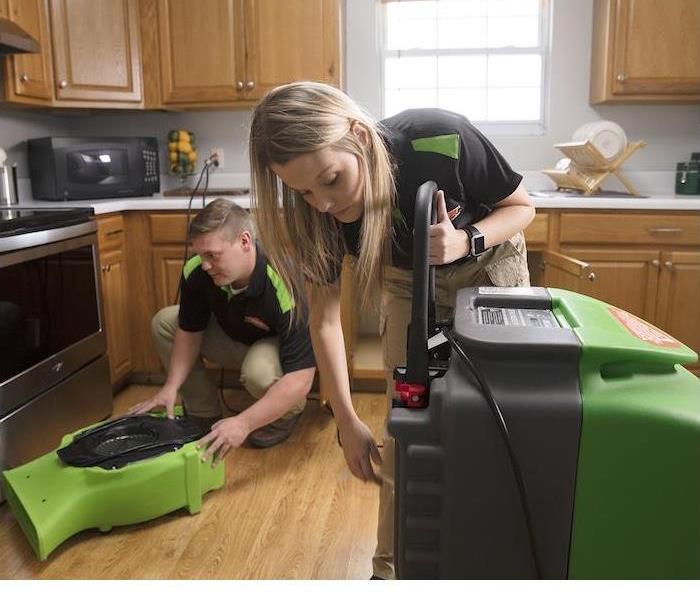 Prepare your business for winter by scheduling a professional deep cleaning with SERVPRO of San Diego East.
Prepare your business for winter by scheduling a professional deep cleaning with SERVPRO of San Diego East.
As the winter season approaches, San Diego businesses experience a noticeable surge in consumer activity. From holiday shopping to end-of-year events, the uptick in foot traffic can leave your business bustling—and your space dirtier than usual. This is where deep cleanings play a vital role. Not only do they enhance the customer experience, but they also safeguard the health of employees and visitors while maintaining your reputation.
###The Impact of Increased Winter Consumerism
Winter in San Diego means mild weather, holiday excitement, and an influx of shoppers eager to enjoy seasonal sales and events. With more people visiting your business, dirt, dust, and allergens can quickly accumulate, particularly in high-touch areas like door handles, counters, and restrooms. A deep cleaning ensures these areas remain spotless and sanitary, reducing the risk of illnesses and creating a welcoming environment for customers.
First impressions matter. A clean and well-maintained space can be the deciding factor for many customers when choosing where to shop, dine, or book services. A regular cleaning schedule may keep things tidy, but deep cleanings go the extra mile by targeting hidden dirt and grime, helping your business stand out during the busiest time of year.
###Protect Your Investment and Your Team
San Diego business owners understand that a clean space isn’t just about appearances—it’s about protecting your investment. Carpets, flooring, and upholstery experience heavy wear and tear during the winter months. Professional deep cleaning can prolong their lifespan by removing embedded dirt and stains.
Additionally, a clean environment boosts employee morale and reduces sick days. Dust and allergens are more likely to circulate during colder months when ventilation systems are used more frequently. Deep cleanings help maintain healthy air quality, keeping your team happy and productive throughout the season.
###Partner with SERVPRO® of San Diego East
At SERVPRO of San Diego East, we understand the unique needs of businesses in our community. Our professional cleaning services are designed to provide a comprehensive clean that tackles even the toughest messes. With the increase in winter consumerism, now is the perfect time to schedule a deep cleaning to keep your business thriving.
Ready to elevate your business space this season? Contact SERVPRO of San Diego East today to learn more about our cleaning services and schedule your consultation. Visit our website to get started!






 24/7 Emergency Service
24/7 Emergency Service









